What Happened to Judee Sill? A Look at the Late Singer’s Life, Career and Untimely Death
A documentary about Judee Sill’s life, 'Lost Angel: The Genius of Judee Sill,' released in theaters on April 12
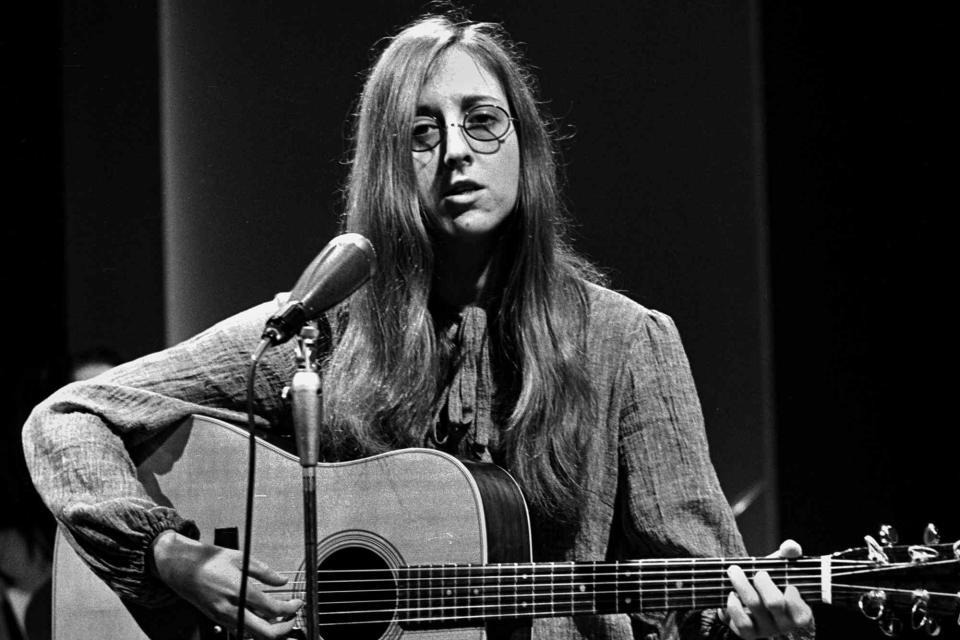
Gijsbert Hanekroot/Redferns
Judee Sill performs on a TV show in London, April 1972.In the early 1970s, singer-songwriter Judee Sill had all the makings of a star.
In 1971, Sill was the first recording artist signed to music mogul David Geffen’s Asylum Records — the same recording label that would go on to represent legendary artists including the Eagles, Bob Dylan, Joni Mitchell and Jackson Browne. At the time of her signing, Sill envisioned a similar fate for herself.
“He asked me, ‘What do you wanna do?’ I said, ‘Be a star,’ ” Sill recalled to Rolling Stone in 1972 about her first meeting with Geffen. When Geffen responded by asking Sill how big of a star she wanted to be, she gave a lofty answer: “How big is the limit?”
Though Sill had big ambitions, her life up until that point was marred by legal troubles and personal tragedies. Her father died when she was 8, and she lost her only sibling, a brother named Dennis, and her mother by the time she was in her teens. Sill also grew up in an abusive home, and turned to a life of crime and drug usage as an escape mechanism. By the time she was in her early 20s, she had been arrested for armed robbery, developed a heroin addiction and been jailed on narcotics and forgery charges.
Sill left prison in the late 1960s with a new lease on life, clean from drugs and determined to become a songwriter. When she was signed by Geffen, Sill seemed to be well on her way to achieving her dreams — but her music career would not take off as she had hoped. She recorded two albums with Asylum Records, Judee Sill and Heart Food, both of which were positively reviewed but commercial flops.
Sill’s life began to take a downturn shortly after the disappointing debut of 1973’s Heart Food. She was injured in two separate accidents (a car wreck and a fall), her contract with Asylum was terminated in 1975, and she fell back into the throes of drug addiction. On Nov. 23, 1979, Sill was found dead of a drug overdose in her Los Angeles apartment. She was just 35 years old.
Though Sill may not have gained the fame she hoped for during her short life, her music has gained critical acclaim in the decades since her death. On April 12, Sill finally received the spotlight she once craved with the documentary Lost Angel: The Genius of Judee Sill.
The documentary, which has been in the works for nine years, provides an “an intimate portrait of a one-of-a-kind singer-songwriter from 1970s Los Angeles ... from a troubled adolescence that included armed robbery and prison through her meteoric rise in the music world and tragic early death,” Deadline reported.
Here’s a closer look at the life, career and tragic death of Judee Sill.
Sill had a troubled childhood

Gijsbert Hanekroot/Redferns
Judee Sill in London in 1972 on tour to promote her second album, 'Heart Food'.Born on Oct. 7, 1944, in Los Angeles, Judith Lynne Sill was the second child of Milford “Bun” Sill, a sound technician for Paramount Pictures, and Oneta Sill. When she and her older brother, Dennis, were young, Milford moved the family to Oakland where he owned a bar named Bud’s, according to Rolling Stone. As a child, Sill learned to play piano and sing at Bud’s — but was also exposed to drinking and gambling, she revealed in a 1972 interview with Rolling Stone.
“It was so seedy in the bar,” Sill told the magazine, in one of her only interviews. “People were always fightin’ and pukin’, there was illegal gamblin’, and my parents drank a lot, too.”
In 1952, when Sill was only 8 years old, her father Milford died of pneumonia. Following his death, Oneta moved her two children from Oakland back to L.A. and remarried Kenneth Muse, an animator for the cartoon Tom & Jerry. Sill alleged that Oneta and Muse were both physically and verbally abusive — to one another and to her.
“My stepfather was dumb and cruel, and my mother began to get more unreasonable herself,” Sill revealed to Rolling Stone. “So there was violence all the time. I always had scars on my knuckles. We had such violent fights at our house that the police and newspapermen would come.”
Sill became a rebellious — and felonious — teenager

Gijsbert Hanekroot/Redferns
Judee Sill in London, April 1972.Sill’s difficult home life led to her acting out as a teenager. According to Rolling Stone, she was kicked out of Birmingham High School, the public high school in Van Nuys, Calif., and was transferred to a private school — where she met other teens who “expressed themselves through crime.”
Right after graduating from high school, Sill ran off with a man from Sherman Oaks and got married, but the marriage was quickly annulled by their parents. Following the annulment, she was deeply unhappy, she told Rolling Stone, so she reached out to an acquaintance from high school and told him she wanted to “be involved in a crime of some kind.” He connected her with a man who committed armed robberies, and Sill acquired a gun and joined him as he held up liquor stores and gas stations.
The armed robberies led to Sill’s first arrest in 1963, when she was 18 years old. She was sent to reform school, where she spent her time as the church organist, studying gospel lyrics and assisting the music and art teachers, Rolling Stone reported. In 1964, shortly after her release from reform school, Sill’s mother died from alcoholism and her stepfather began locking her out of the house. As a result, Sill fell into drugs and married for the second time, in 1966, to a piano player named Bob Harris.
Harris introduced Sill to heroin, and she began prostituting herself and forging checks to fund their habit — which, at one point, reportedly grew to 20 bags a day.
“I knew I was gonna become a junkie, and I did. Before long, we were both up to a couple of bags a day,” she revealed in her 1972 Rolling Stone interview. “Things were definitely goin’ downhill for us.”
In 1968, Sill was sent to jail on narcotics and forgery charges. While in prison, Sill learned her older brother, Dennis, had died from a liver infection. It was during this time, as she detoxed from heroin and mourned her brother’s death, that Sill determined she wanted to become a musician.
Sill became one of the first artists signed by record executive David Geffen
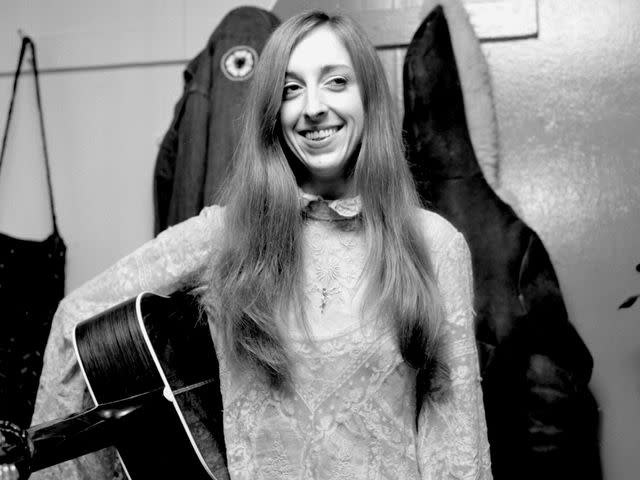
Earl Leaf/Michael Ochs Archives/Getty
Judee Sill backstage at The Troubadour in West Hollywood on January 6, 1972.Following her release from prison, Sill immediately began songwriting and playing gigs throughout L.A. Though she was living out of a 1955 Cadillac with four other people, she experienced quick success — even selling her song “Lady-O” to the popular 1960s rock band The Turtles. The cover climbed to No. 78 on the Billboard Top 100 in December 1969, per Rolling Stone.
Around this time, Sill sent a demo and letter to David Geffen, who was about to start his own record label, Asylum Records, according to The New York Times.
“It was unlike any letter, about prison, being a heroin addict, so I called her up, and she came up to see me, and she played me some of her demos,” Geffend told The New York Times about Sill. “She was a unique songwriter, a wonderful singer, and had an unusual tale to tell about herself.”
Sill impressed Geffen and, in 1971, she became one of the first artists the music mogul signed to Asylum Records.
“David is ... the best person in the business for an artist to be involved with,” Sill told Rolling Stone about Geffen in 1972. “I’ve seen him be real ruthless for the sake of the artists who work for him.”
She continued, “When I first met him, I thought he was some kind of knight in shinin’ armor ... I always trust him as far as business stuff goes, and I wouldn’t want to be with anyone else.”
Sill released two albums during her career, 1971’s Judee Sill and 1973’s Heart Food
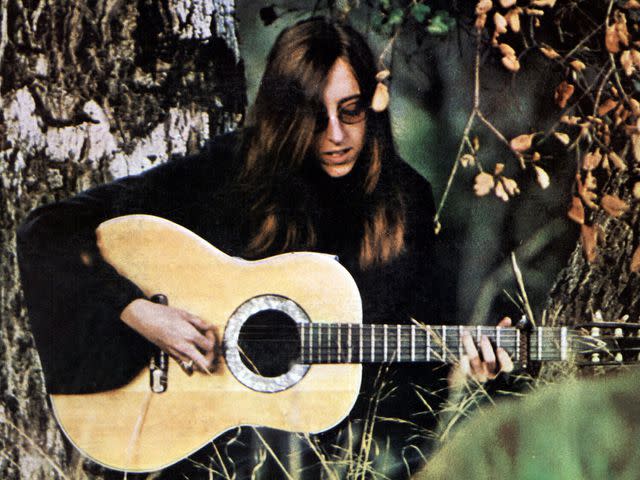
GAB Archive/Redferns
Judee Sill.Sill’s debut album, eponymously titled Judee Sill, was released in September 1971. The album’s first single went on to become one of Sill’s most famous songs, “Jesus Was a Cross Maker.” Though the album did not achieve much commercial success, it was critically praised, Rolling Stone reported. To promote the album, Sill went on tour as the opening act for Graham Nash and David Crosby.
“It wasn’t perfection, but it was pretty good, and I guess it’s sold around 40,000 copies by now, which isn’t bad for a first album,” Sill told Rolling Stone about her first album. “I learned a lot from makin’ it. I learned what not to do on the next one, for one thing.”
The “next one” was Heart Food, Sill’s sophomore album that was released in March 1973. It failed to perform commercially, but also received positive reviews — though the lack of success began to frustrate Sill, according to Rolling Stone.
“I’m conscious of my greed. I mean, I want to achieve somethin’ materially – I want to achieve somethin’ as far as gettin’ more attention, you know?” she told the outlet in 1972. “So I want to do somethin’ for the good of humanity, but at the same time I also need to feed my hungry monsters.”
Her songs were inspired by religion and Bach
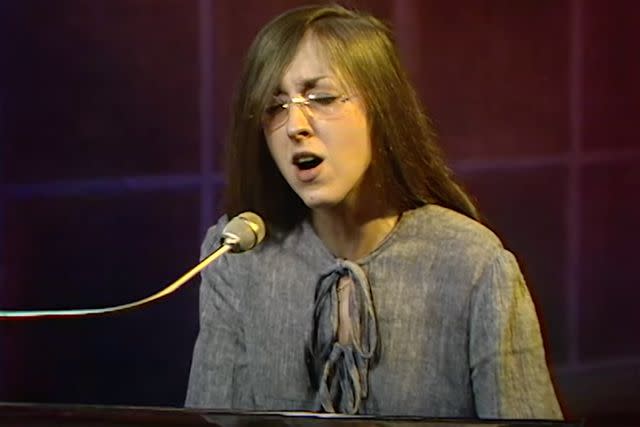
Greenwich Entertainment
Judee Sill in 'Lost Angel: The Genius of Judee Sill'.According to The New York Times, Sill said she drew inspiration from books about religion and the occult as well as the composer J.S. Bach.
“I got into readin’ real deep books, books about religion and the occult. And I could see that I was gonna have to write songs that were about those things, you know?” she told Rolling Stone in 1972.
One of those books was Nikos Kazantzakis’ 1952 novel The Last Temptation of Christ. Imagery from that novel went on to inspire one of Sill’s most famous songs, “Jesus Was a Cross Maker.”
“I was so excited when I was writin’ that song because it was not only the best thing I’d ever written, and I knew it, but it took the weight off my heart and turned it into somethin’ else,” she said to Rolling Stone. “I gained a new kind of strength from it, from that combination of forgiveness and creation.”
Sill also considered J.S. Bach one of her idols and many of her orchestral arrangements are influenced by the iconic composer. She once told Britain’s music newspaper NME that her three primary influences were the Greek philosopher and mathematician Pythagoras, Bach and Ray Charles.
“My music is really magnified four-part choral style,” she told the Los Angeles Herald-Examiner, per The Guardian. “It gets to people's emotional centers quickly. That;s why all church music is in four-part choral style.”
Sill died of a drug overdose on Nov. 23, 1979
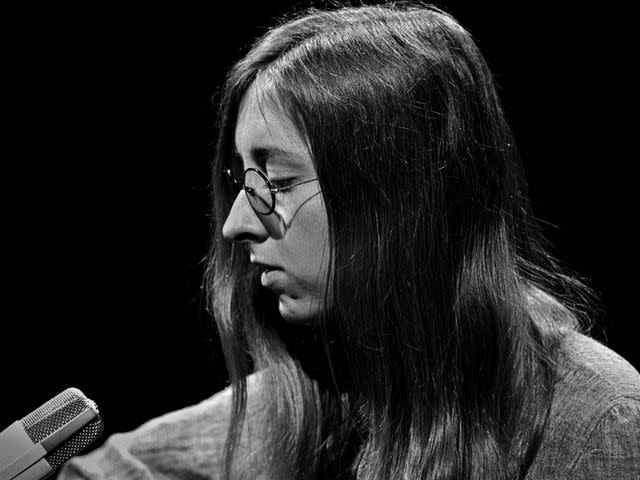
Gijsbert Hanekroot/Redferns
Judee Sill performs on a TV show in London, April 1972.Following the release of her second album, Sill’s personal and professional life became turbulent once again.
Her relationship with Geffen soured shortly after the release of her second album, Heart Food, with Sill reportedly making an offensive comment about the producer onstage. Around the same time, Sill also began using drugs again. After a car accident in late 1973 left her in a full body cast and a fall in 1974 resulted in a severe back injury, she turned to drugs to help ease her severe pain, according to Rolling Stone. A secret journal of Sill’s revealed that she resorted to using “speedballs” (a mixture of cocaine and heroin), codeine and other narcotics.
Her addiction worsened over the next several years, and on Nov. 23, 1979 — the day after Thanksgiving — Sill was found dead in her North Hollywood apartment after overdosing on opiates and cocaine. She was 35 years old. The Los Angeles coroner ruled her death a suicide, as a “note” was found near her body — but those close to her believed the so-called note was more likely a journal entry or the beginnings of a song, The Washington Post reported.
“She loved living too much,” Tommy Peltier, a jazz musician and one of Sill’s closest friends, told Rolling Stone. “She liked to experiment, and this time she just went a little bit too far.”
At the time of her death, Sill had fallen so far out of the spotlight that those once close to her didn’t learn of her passing until more than a year later, The Guardian reported. No obituary for the singer-songwriter was published until The New York Times featured Sill in their “Overlooked No More” series in 2020.
Her third album, Dreams Come True, was released more than 25 years after her death
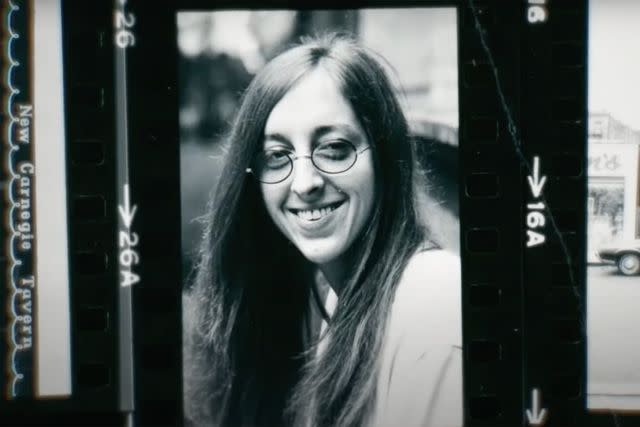
Greenwich Entertainment
Judee Sill in 'Lost Angel: The Genius of Judee Sill'.In the years leading up to her death, Sill was working on her third album, which she planned to call Dreams Come True. She had recorded demos for eight songs for Dreams Come True when her contract with Asylum was terminated and the project was shelved, according to Rolling Stone.
The tracks remained dormant until 1999 when music producer Pat Thomas discovered the unfinished album. He worked with Sill’s family and the composer/producer Jim O’Rourke to finish Dreams Come True, which was posthumously released by Water Records in 2005 — 26 years after Sill’s untimely death.
The release of Dreams Come True, as well as reissues of Judee Sill and Heart Food, have helped to keep Sill’s legacy alive.
“Every three or four years, a whole new generation of people discover her,” Thomas told Rolling Stone about Sill. “It’s like Judee’s Secret-Handshake Club, except that it has a lot of members.”
For more People news, make sure to sign up for our newsletter!
Read the original article on People.

